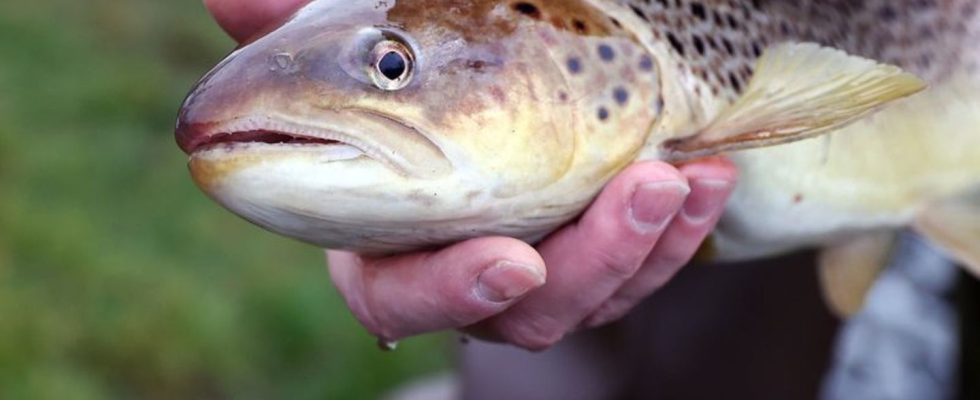freshwater fish
Red List: Trout now classified as endangered
According to the IGB, 52 percent of native freshwater fish species are currently considered “endangered” or already “extinct or lost.” photo
© Ronny Hartmann/dpa-Zentralbild/dpa
More than half of the freshwater fish and lampreys in Germany are considered “endangered” or already “extinct”. The reasons are known, as is the remedy.
For the first time, trout is considered an endangered fish in Germany. This emerges from the new Red List for freshwater fish and lampreys in Germany. A total of 21 species have been upgraded to an endangerment category, reported the Leibniz Institute for Freshwater Ecology and Inland Fisheries (IGB) in Berlin, which presented the list. This means that more than half of the native species are now considered “endangered” or already “extinct”. The list has been updated for the first time since 2009. Lampreys are fish-like, phylogenetically very ancient vertebrates.
Instructions for consumption
However, he definitely does not advise against eating trout from Germany, says IGB research group leader Christian Wolter, one of the main authors of the Red List. “The German trout sold in stores mainly comes from small trout pond farms that produce very good food.” The situation is different with trout, which is fattened in South America, smoked in Morocco and then marketed in Germany. This causes great environmental damage.
“For the Red List, we only assessed the free-living wild populations,” emphasizes Wolter. “And even if the population is declining, anglers working to protect it should also reap the fruits of their efforts and eat a trout they caught every now and then,” he adds. Without the efforts of anglers to preserve the many small trout streams, the species would probably be in worse shape.
Habitat loss and climate change
With around 10 percent extinct species of freshwater fish and lamprey, Germany is well above the European average of 2.5 percent, according to the IGB. The causes include the loss of habitats due to water development and pollution as well as climate change, says IGB research group leader Christian Wolter, one of the main authors of the Red List.
According to IGB information, in many places there are no so-called oxbow lakes and shallow flooded floodplains in which the fish fry can develop undisturbed. Weirs and dams that interrupt fish migration routes are also a cause of the decline of many species. In addition, there are the effects of climate change such as higher water temperatures and less oxygen in the water.
More than half of the species are endangered or extinct
There are now 38 species classified as “endangered” on the list, up from 22 species in 2009. “We have seen a very clear deterioration in the threat situation for native freshwater fish and lampreys over the last fourteen years,” says Wolter.
Currently, 52 percent of species are considered “endangered” or already “extinct or lost.” These are 47 of the 90 established native species. Only 36 percent are considered “not at risk”. The remaining species are “extremely rare”, are on the early warning list or cannot be classified due to a lack of data.
“Suitable assistance and protective measures have long been known”
“For most freshwater fish and lampreys, the main causes of endangerment and suitable assistance and protection measures have long been known,” said Wolter. “A big problem is that other functions, especially of rivers, are often more important to us as a society: flood protection, shipping, drainage, wastewater discharge, electricity generation, water extraction, heat input count here more than ecological criteria.”
Sturgeons are also considered particularly endangered: seven of the eight species of sturgeon found in Europe are “threatened with extinction” across Europe, and the eighth is now considered “critically endangered,” writes the IGB. The Atlantic salmon (Salmo salar) is also still threatened with extinction in Germany despite reintroductions. “The continuity of the rivers for migratory fish such as Atlantic salmon must be further improved, if only to mitigate the threat to this cold-loving species from climate change,” said Wolter.

